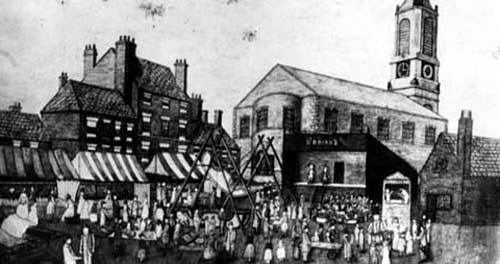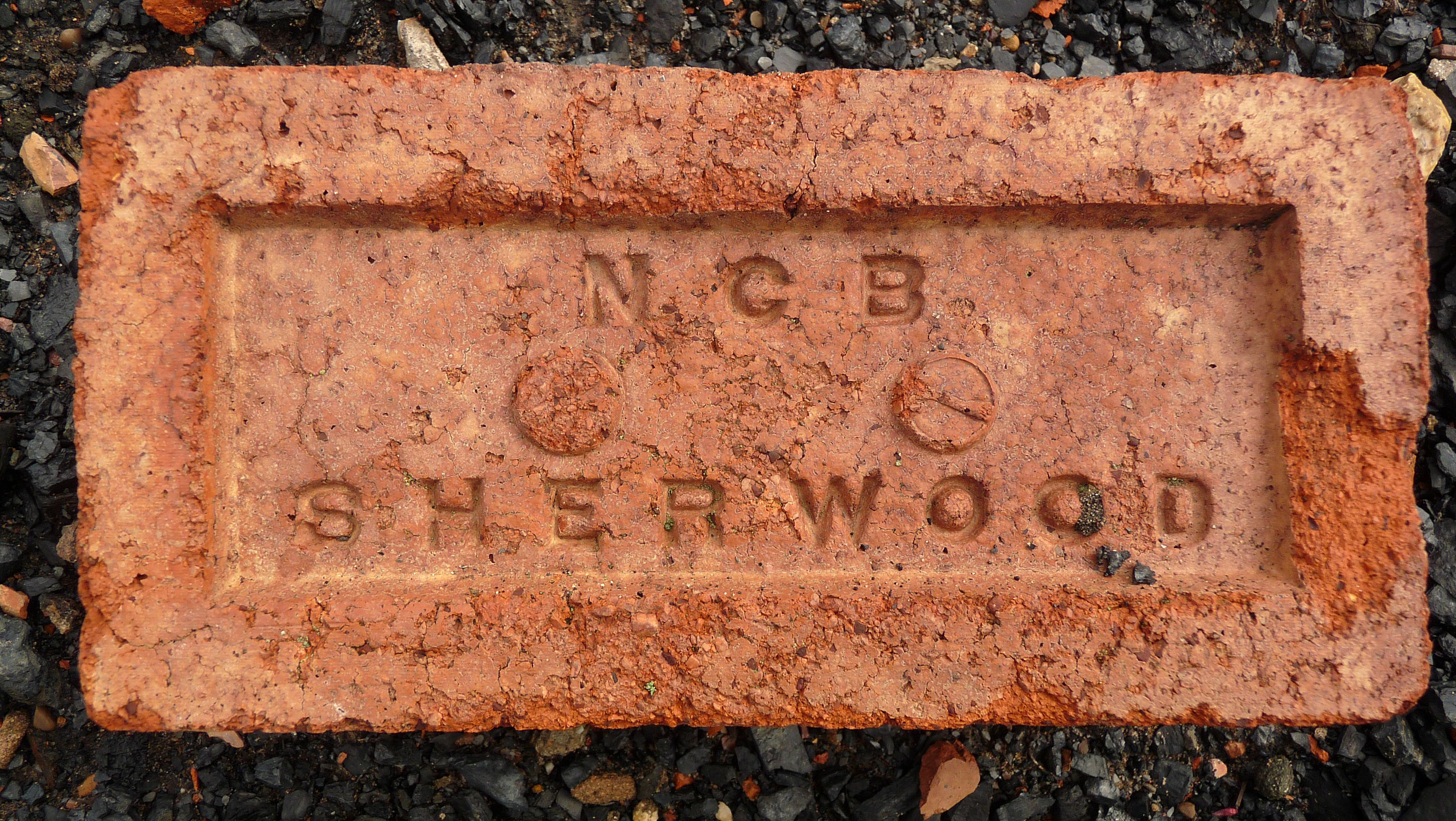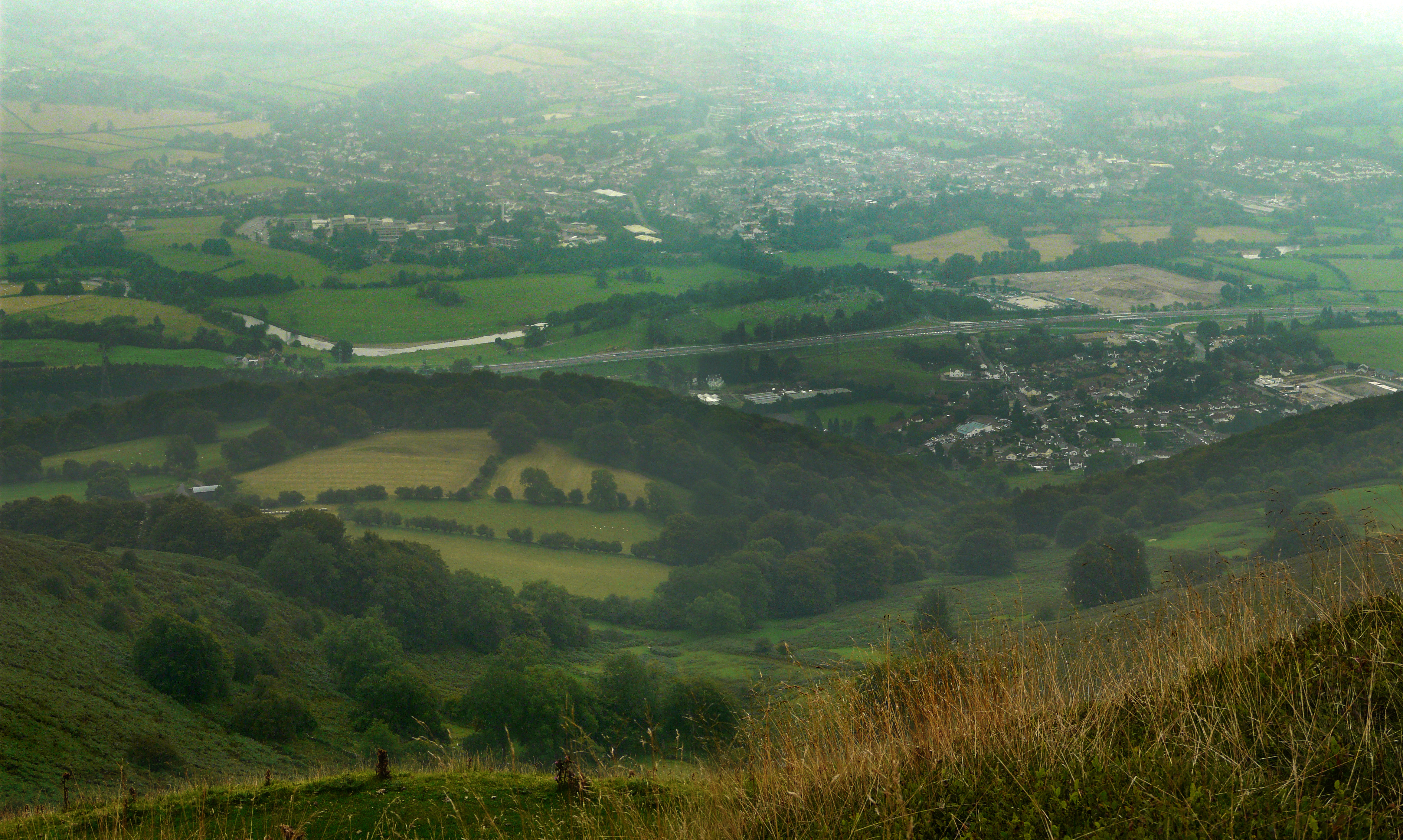|
Pontypool And Blaenavon Railway
The Pontypool and Blaenavon Railway () is a volunteer-run heritage railway in South Wales, running trains between a Whistle Inn Halt railway station, halt platform opposite the Whistle Inn public house (famed for its collection of Davy lamp, miners' lamps) southwards to the town of Blaenavon via a two-platform station at the site of former colliery furnace of the Big Pit National Coal Museum. The line is the highest preserved standard-gauge line in the United Kingdom, and also uniquely having the only standard-gauge rail-over-rail bridge within preservation. History of the line The line from Brynmawr to Blaenavon was originally built under the Brynmawr and Blaenavon Railway Act 1866 (29 & 30 Vict. c. ccix) by the Brynmawr and Blaenavon Railway and immediately leased to the London and North Western Railway (LNWR) to transport coal to the Midlands via the Merthyr, Tredegar and Abergavenny Railway, Heads of the Valleys line. The line was completed in 1869 and the LNWR commenc ... [...More Info...] [...Related Items...] OR: [Wikipedia] [Google] [Baidu] |
Blaenavon
Blaenavon () is a town and community (Wales), community in Torfaen county borough, Wales, high on a hillside on the source of the Afon Lwyd. It is within the boundaries of the historic county of Monmouthshire (historic), Monmouthshire and the Preserved counties of Wales, preserved county of Gwent (county), Gwent. The population is 6,055. Parts of the town and surrounding country form the Blaenavon Industrial Landscape, selected as a World Heritage Site by UNESCO in 2000. History ''Blaenavon'' literally means "head of the river" or loosely "river's source" in the Welsh language. Blaenavon grew around an ironworks opened in 1788 by the West Midlands (region), West Midlands industrialist Thomas Hill of Dennis, Thomas Hill and his partners, Thomas Hopkins and Benjamin Pratt. The businessmen invested £40,000 into the ironworks project and erected three blast furnaces. Hopkins, as a result of operating the Cannock Wood Forge, Staffordshire, was in contact with skilled and ex ... [...More Info...] [...Related Items...] OR: [Wikipedia] [Google] [Baidu] |
Abersychan And Talywain Railway Station
Abersychan and Talywain station served the town of Abersychan in the Welsh county of Monmouthshire. The station was the meeting point for two major pre-grouping railways as they competed for the South Wales coal traffic. History Opened on 1 May 1878 by the Brynmawr and Blaenavon Railway, it became part of the London and North Western Railway which through the connection with the Heads of the Valleys Line was able to take coal directly to destinations in the Midlands. A junction with the Pontypool and Blaenavon Railway led to joint use once that railway was absorbed into the Great Western Railway. Passenger use ceased during the Second World War, the first day without service being 5 May 1941, but general goods were carried until 1954 and the line was used by the Big Pit at Blaenavon until the coal mine closed in 1980. The station site today The line through the station site can still be traced on an OS map. A cycle path has been built along the former line and through ... [...More Info...] [...Related Items...] OR: [Wikipedia] [Google] [Baidu] |
Hunslet 0-6-0ST Eastmoor Steelworks No 18 Jessie Run Round Blaenavon Furnace Sidings
Hunslet () is an inner-city area in south Leeds, West Yorkshire, England. It is southeast of the city centre and has an industrial past. It is situated in the Hunslet and Riverside ward of Leeds City Council and Leeds South parliamentary constituency. The population of the previous City and Hunslet council ward at the 2011 census was 33,705. Many engineering companies were based in Hunslet, including John Fowler & Co. manufacturers of traction engines and steam rollers, the Hunslet Engine Company builders of locomotives (including those used during the construction of the Channel Tunnel), Kitson & Co., Manning Wardle and Hudswell Clarke. Many railway locomotives were built in the Jack Lane area of Hunslet. The area has a mixture of modern and 19th century industrial buildings, terraced housing and 20th century housing. It is an area that has grown up significantly around the River Aire in the early years of the 21st century, especially with the construction of modern ri ... [...More Info...] [...Related Items...] OR: [Wikipedia] [Google] [Baidu] |
Big Pit Halt - Geograph-4069308-by-Gareth-James
Big or BIG may refer to: * Big, of great size or degree Film and television * ''Big'' (film), a 1988 fantasy-comedy film starring Tom Hanks * ''Big'', a 2023 Taiwanese children's film starring Van Fan and Chie Tanaka * ''Big!'', a Discovery Channel television show * ''Richard Hammond's Big'', a television show presented by Richard Hammond * ''Big'' (TV series), a 2012 South Korean TV series * "Big" (''My Hero''), a 2003 television episode * ''Banana Island Ghost'', a 2017 fantasy action comedy film Music * '' Big: the musical'', a 1996 musical based on the film * Big Records, a record label * ''Big!'' (Betty Who album) * ''Big'' (album), a 2007 album by Macy Gray * "Big" (Brassmunk song) * "Big" (Dead Letter Circus song) * "Big" (Fontaines D.C. song) * "Big" (Juice Wrld song) * "Big" (Sneaky Sound System song) * "Big" (Rita Ora and Imanbek song) * "Big" (Young M.A song) * "Big", a 1990 song by New Fast Automatic Daffodils * "Big", a 2021 song by Jade Eagleson fro ... [...More Info...] [...Related Items...] OR: [Wikipedia] [Google] [Baidu] |
Blaenavon Furnace Sidings Station Building
Blaenavon () is a town and community in Torfaen county borough, Wales, high on a hillside on the source of the Afon Lwyd. It is within the boundaries of the historic county of Monmouthshire and the preserved county of Gwent. The population is 6,055. Parts of the town and surrounding country form the Blaenavon Industrial Landscape, selected as a World Heritage Site by UNESCO in 2000. History ''Blaenavon'' literally means "head of the river" or loosely "river's source" in the Welsh language. Blaenavon grew around an ironworks opened in 1788 by the West Midlands industrialist Thomas Hill and his partners, Thomas Hopkins and Benjamin Pratt. The businessmen invested £40,000 into the ironworks project and erected three blast furnaces. Hopkins, as a result of operating the Cannock Wood Forge, Staffordshire, was in contact with skilled and experienced ironworkers, and managed to persuade many of them to migrate to Blaenavon to help establish the new ironworks. In 1836 Robe ... [...More Info...] [...Related Items...] OR: [Wikipedia] [Google] [Baidu] |
National Cycle Network
The National Cycle Network (NCN) was established to encourage cycling and walking throughout the United Kingdom, as well as for the purposes of bicycle touring. It was created by the charity Sustrans who were aided by a £42.5 million National Lottery (United Kingdom), National Lottery grant. However Sustrans themselves only own around 2% of the paths on the network, the rest being made of existing public highways and rights of way, and permissive paths negotiated by Sustrans with private landowners. In 2017, the Network was used for over 786 million cycling and walking trips, made by 4.4 million people. In 2020, around a quarter of the NCN was scrapped on safety grounds, leaving of signed routes. These are made up of of traffic-free paths with the remaining on-road. It uses shared use paths, Rail trail, disused railways, minor roads, canal towpaths and traffic-calmed routes in towns and cities. History The Bristol and Bath Railway Path (now part of National ... [...More Info...] [...Related Items...] OR: [Wikipedia] [Google] [Baidu] |
Cwmbran
Cwmbran ( ; , also in use as an alternative spelling in English) is a town in the county borough of Torfaen in South Wales. Lying within the Historic counties of Wales, historic boundaries of Monmouthshire (historic), Monmouthshire, Cwmbran was designated as a New towns in the United Kingdom, New Town in 1949 to provide new employment opportunities in the south eastern portion of the South Wales Coalfield. Geography Comprising the villages of Old Cwmbran, Pontnewydd, Upper Cwmbran, Henllys, Torfaen, Henllys, Croesyceiliog, Llantarnam and Llanyrafon, its population had grown to 48,535 by 2011. This makes it the List of urban areas in Wales by population, sixth largest urban area in Wales. Sitting as it does at the corner of the South Wales Coalfield, it has a hilly aspect to its western and northern edges, with the surrounding hills climbing to over . The Afon Llwyd forms the major river valley, although the most significant water course is probably the remains of the Monmouthsh ... [...More Info...] [...Related Items...] OR: [Wikipedia] [Google] [Baidu] |
National Coal Board
The National Coal Board (NCB) was the statutory corporation created to run the nationalised coal mining industry in the United Kingdom. Set up under the Coal Industry Nationalisation Act 1946, it took over the United Kingdom's collieries on "vesting day", 1 January 1947. In 1987, the NCB was renamed the British Coal Corporation, and its assets were subsequently privatised. Background Collieries were taken under government control during the World War I, First and World War II, Second World Wars. The Sankey Commission in 1919 gave R. H. Tawney, Sidney Webb and Sir Leo Chiozza Money the opportunity to advocate nationalisation, but it was rejected. Coal reserves were nationalised during the war in 1942 and placed under the control of the Coal Commission (United Kingdom), Coal Commission, but the mining industry remained in private hands. At the time, many coal companies were small, although some consolidation had taken place in the years before the war. Formation and organisat ... [...More Info...] [...Related Items...] OR: [Wikipedia] [Google] [Baidu] |
Big Pit
Big Pit National Coal Museum () is an industrial heritage museum in Blaenavon, Torfaen, Wales. A working coal mine from 1880 to 1980, it was opened to the public in 1983 as a charitable trust called the Big Pit (Blaenavon) Trust. By 1 February 2001 Big Pit Coal Museum was incorporated into the National Museums and Galleries of Wales as the National Mining Museum of Wales. The site is dedicated to operational preservation of the Welsh heritage of coal mining, which took place during the Industrial Revolution. Located adjacent to the preserved Pontypool and Blaenavon Railway, Big Pit is part of the Blaenavon Industrial Landscape, a World Heritage Site, and an Anchor Point of the European Route of Industrial Heritage. History of the working pit: 1860-1980 Big Pit was originally an iron mine, driven into the side of the mountain not far from the surface due to the shallow iron deposits, the level is called Engine Pit Level and can still be seen on the bridge connecting Blaenavon a ... [...More Info...] [...Related Items...] OR: [Wikipedia] [Google] [Baidu] |
Blorenge
Blorenge, also called The Blorenge (; ), is a prominent hill overlooking the valley of the River Usk near Abergavenny, Monmouthshire, southeast Wales. It is situated in the southeastern corner of the Brecon Beacons National Park. The summit plateau reaches a height of . Geography Blorenge overlooks the market town of Abergavenny and the villages of Llanfoist, Llanellen and Govilon in the Usk Valley to the north. At the foot of the hill lies the Monmouthshire & Brecon Canal. It drops away steeply to the northwest into Cwm Llanwenarth. To the south, gentler slopes fall away to Blaenavon at the head of the Afon Lwyd, Lwyd valley. Prominent peaks seen from the Blorenge include the Skirrid to the east of Abergavenny and the Sugar Loaf, Monmouthshire, Sugar Loaf to the north. The high moorland ridge continues to the south of the minor road at Foxhunter car park and assumes the name Mynydd y Garn-fawr. The cairn referenced in the title of this southerly shoulder of Blorenge may be t ... [...More Info...] [...Related Items...] OR: [Wikipedia] [Google] [Baidu] |
Second World War
World War II or the Second World War (1 September 1939 – 2 September 1945) was a World war, global conflict between two coalitions: the Allies of World War II, Allies and the Axis powers. World War II by country, Nearly all of the world's countries participated, with many nations mobilising all resources in pursuit of total war. Tanks in World War II, Tanks and Air warfare of World War II, aircraft played major roles, enabling the strategic bombing of cities and delivery of the Atomic bombings of Hiroshima and Nagasaki, first and only nuclear weapons ever used in war. World War II is the List of wars by death toll, deadliest conflict in history, causing World War II casualties, the death of 70 to 85 million people, more than half of whom were civilians. Millions died in genocides, including the Holocaust, and by massacres, starvation, and disease. After the Allied victory, Allied-occupied Germany, Germany, Allied-occupied Austria, Austria, Occupation of Japan, Japan, a ... [...More Info...] [...Related Items...] OR: [Wikipedia] [Google] [Baidu] |
Beeching Axe
The Beeching cuts, also colloquially referred to as the Beeching Axe, were a major series of route closures and service changes made as part of the restructuring of the nationalised railway system in Great Britain in the 1960s. They are named for Dr. Richard Beeching, then-chair of the British Railways Board and the author of two reports''The Reshaping of British Railways'' (1963) and ''The Development of the Major Railway Trunk Routes'' (1965) that set out proposals for restructuring the railway network, with the stated aim of improving economic efficiency. The first report identified 2,363 stations and of railway line for closure, amounting to 55% of stations, 30% of route miles, and the loss of 67,700 British Rail jobs, with an objective of stemming the large losses being incurred during a period of increasing competition from road transport and reducing the rail subsidies necessary to keep the network running. The second report identified a small number of major routes f ... [...More Info...] [...Related Items...] OR: [Wikipedia] [Google] [Baidu] |








